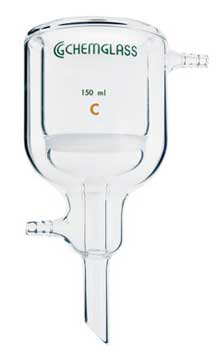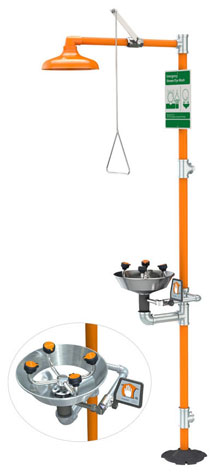| The Home page of ILPI's Safety Data Sheet (SDS) Resource, the leader in SDS information since 1995! | |
| The history and philosophy behind this resource. | |
| A curated collection of books and reference materials concerning Safety Data Sheets and closely related topics. | |
| Paste your plain text SDS into the SDS-Demystifier, and it will be converted into a hypertext-enriched document with links to detailed explanations of each key term. | |
| An extensive list of frequently asked questions about Safety Data Sheets including regulations, content, compliance, and more. | |
| A humorous take on Safety Data Sheet jargon. Fill in the blanks on our entry form to generate a personalized Unsafety Data Sheet to share with your coworkers. | |
| Since 1995, we've maintained this massive curated list of the best places to find Safety Data Sheets on the Internet. | |
| You are here! Way more than a glossary, this hypertext-enhanced resource covers hundreds of SDS-related terms and expert knowledge. Each entry includes both the SDS relevance and links to additional authoritative resources. | |
| Archived results of Safety Data Sheet related polls taken by some of our millions of site visitors | |
| The OSHA regulations behind SDS regulations, including the inspection guidelines and over 400 official interpretations letters under the Hazard Communication Standard | |
| Commercial suppliers of SDS authoring and management software as well as cloud compliance services. | |
| Commercial companies that will create SDS's for your specific needs as well as SDS translation companies. |

Safety signs, banners, and scoreboards? Get yours at Safety Emporium!
Definition
A solution is a homogeneous mixture of two or more substances. The substance that is present in the largest amount is called the solvent and the one present in the smaller amount is called a solute.
There can only be one solvent in a solution, but there can be many solutes. Soda pop is a good example - the solvent is water and the solutes include carbon dioxide, sugar, flavorings, caramel color etc.
Additional Info
Solutions can be solids, liquids or gases. The final state of the solution under a given set of conditions depends on the materials and their physical and chemical properties. Some examples include:
| Component 1 | Component 2 | Solution | Examples |
|---|---|---|---|
| Solid | Solid | Solid | Brass (a mixture of ~70% copper and ~30% zinc), "silver" dental fillings (a solid 8:1 mixture of tin and mercury) |
| Solid | Liquid | Liquid | Sugar dissolved in water, salt water. |
| Solid | Gas | Solid | Hydrogen gas adsorbed to palladium metal |
| Liquid | Gas | Liquid | Carbon dioxide dissolved in water (soda water) |
| Liquid | Liquid | Liquid | Alcohol in water, antifreeze (ethylene glycol in water), gasoline (a complex mixture of hydrocarbons) |
| Gas | Gas | Gas | Air, natural gas (mostly methane and ethane), synthesis gas (a mixture of hydrogen and carbon monoxide). |

Filter mixtures at constant temperature with laboratory frits and filters from Safety Emporium.
A solution that has some solid present is not a solution, but a heterogeneous mixture.
Solutions fall into three general classes:
- Unsaturated solutions have the capacity to dissolve more of the solute.
- Saturated solutions have dissolved the maximum amount of solute possible at a given temperature. This is defines the solubility of the solute in the solvent.
- Supersaturated solutions contain more solute than is present in a saturated solution.
That last item sounds suspicious - how can something hold more material than it can hold? This is best illustrated by example:
We know that hot water dissolves more sugar than cold water. When we cool a saturated solution of hot sugar water, the water can no longer keep all of the sugar dissolved. Some sugar must crystallize from the solution. However, crystallization requires a nucleation site such as another sugar crystal or a speck of lint for the crystal to grow. If our container is scrupulously clean, the crystals have no place to begin growth! But if we add a crystal of sugar to the supersaturated solution, the "extra" sugar will rapidly drop of out this metastable solution until the solution is again saturated. There are some great general chemistry demos of this principle; see Further Reading below.
When a solid deposits from a solution the process is called crystallization if the solid is crystalline and precipitation if the solid is a powder or amorphous material. The solid that is formed is called the precipitate and the liquid solution that remains is called the supernatant or "mother liquor".

Safety Emporium carries all kinds of eye/face washes, safety showers, drench hoses and more.
SDS Relevance
Safety Data Sheets are required to report the physical and chemical characteristics of the material in Section 9 (physical and chemical properties) and that includes the solubility (if known). In addition, SDS's may discuss the properties, stability, or hazards of solutions. "Solution" can also appear in Section 4 (first-aid measures) (for example, saline solutions) or in Section 6 (accidental release measures) procedures (for example, "use a solution of XX and YY to...").
Further Reading
- Solutions with some demos and discussion of why "like dissolves like" at Purdue U.
- Sodium Acetate Stalagmite a classic demo of a supersaturated solution depositing crystals.
- Matter: Solutions at Chem4Kids.com
- Solubility of Things, an entire web site devoted to the topic!
- Chapter 7: Solutions And Solution Stoichiometry at Western Oregon University.
- Crystallization at at CU Boulder.
- Saturated Solutions and Solubility at Chemistry LibreTexts.
- Composition of Substances and Solutions at Openstax's free chemistry textbook, Chemistry 2e.
See also: Concentration units, mole, solubility, solvent, vapor.